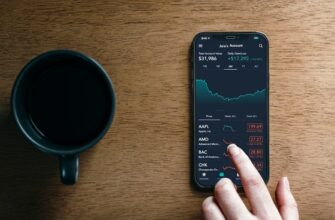- Why Crypto Safety Matters More Than Ever
- Step 1: Choose a Regulated Exchange
- Step 2: Fortify Your Account Security
- Step 3: Verify Transactions Meticulously
- Step 4: Withdraw to Secure Storage Immediately
- Step 5: Maintain Operational Security
- Red Flags: When to Abort a Crypto Purchase
- FAQ: Your Crypto Safety Questions Answered
- Is buying crypto through PayPal safe?
- Can I reverse a crypto transaction?
- How do I spot fake crypto exchanges?
- Are hardware wallets worth the cost?
- What if an exchange goes bankrupt?
- Final Security Checklist Before Buying
Why Crypto Safety Matters More Than Ever
With cryptocurrency scams costing investors over $1 billion in 2023 alone, learning how to buy crypto safely isn’t optional—it’s essential. This guide walks you through security best practices to protect your investments from hackers, phishing scams, and exchange failures. Whether you’re buying Bitcoin, Ethereum, or altcoins, these steps form your financial armor in the volatile crypto landscape.
Step 1: Choose a Regulated Exchange
Your first line of defense starts with platform selection. Prioritize exchanges with:
- Licensing: Look for SEC/FCA compliance (e.g., Coinbase, Kraken)
- Cold Storage ≥95% of user funds
- Insurance against breaches
- Transparent fee structures (avoid hidden costs)
- Fiat on-ramps like bank transfers over sketchy payment methods
Step 2: Fortify Your Account Security
Exchange accounts are prime hacker targets. Lock down access with:
- Unique 20+ character passwords stored in a password manager
- Hardware 2FA (YubiKey) or authenticator apps—never SMS
- Whitelisting withdrawal addresses
- Biometric logins where available
Enable these before funding your account.
Step 3: Verify Transactions Meticulously
Crypto transactions are irreversible. Triple-check:
- Wallet addresses via copy-paste (manual typing invites errors)
- Network compatibility (sending Bitcoin to an Ethereum address destroys funds)
- Small test transfers first ($5-10)
- Gas fees to avoid stalled transactions
Step 4: Withdraw to Secure Storage Immediately
Never leave coins on exchanges long-term. Transfer to:
- Hardware wallets (Ledger, Trezor) for large holdings
- Open-source software wallets (Exodus, Electrum) for smaller amounts
- Multi-sig vaults for collaborative security
Remember: Not your keys, not your crypto.
Step 5: Maintain Operational Security
Ongoing vigilance prevents 80% of attacks:
- Bookmark exchange URLs to avoid phishing sites
- Never share seed phrases—legit services won’t ask
- Use dedicated devices for crypto transactions
- Monitor breach alerts at haveibeenpwned.com
Red Flags: When to Abort a Crypto Purchase
Immediately walk away if you encounter:
- “Guaranteed” returns or urgency tactics
- Unverified apps on third-party stores
- Requests for private keys or remote access
- Exchanges without KYC procedures
FAQ: Your Crypto Safety Questions Answered
Is buying crypto through PayPal safe?
While convenient, PayPal acts as a custodian—you don’t control keys. Use only for small, short-term holdings.
Can I reverse a crypto transaction?
No. Blockchain transactions are permanent. Always verify addresses before sending.
How do I spot fake crypto exchanges?
Check SSL certificates, domain registration dates, and social proof. Legit platforms never contact you first via Telegram or WhatsApp.
Are hardware wallets worth the cost?
Absolutely. A $79 hardware wallet protects thousands in assets—far cheaper than losing funds to hackers.
What if an exchange goes bankrupt?
Without proper custody, recovery is unlikely. This is why immediate withdrawal to self-custody wallets is critical.
Final Security Checklist Before Buying
Always: ✓ Research coins/tokens thoroughly ✓ Use VPN on public networks ✓ Keep software updated ✓ Store backups offline ✓ Trust but verify
By making security your foundation, you transform crypto from a risky gamble into a calculated investment. Stay skeptical, stay informed, and let caution drive your blockchain journey.








